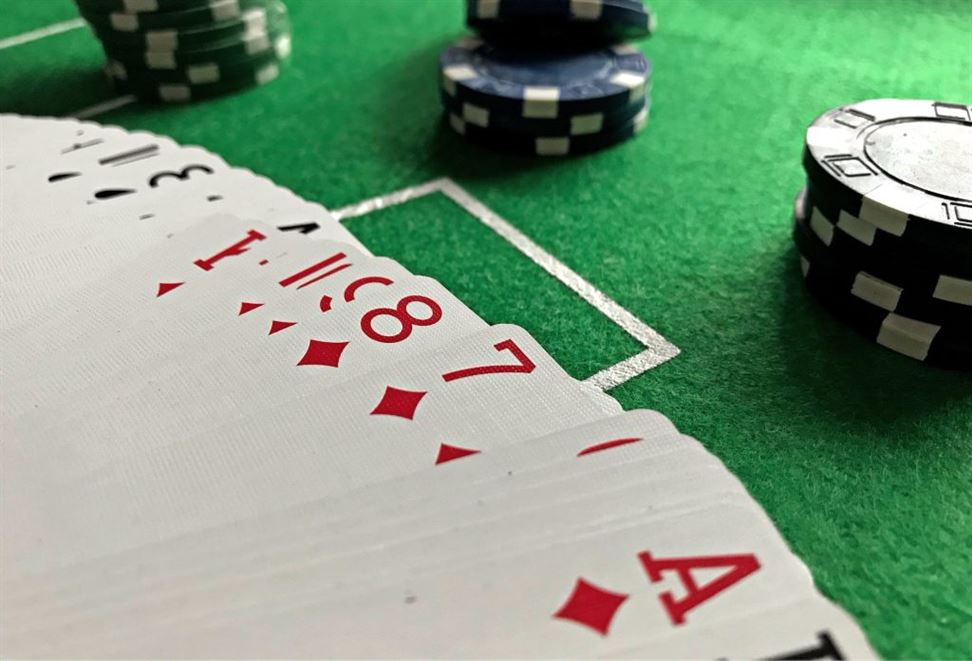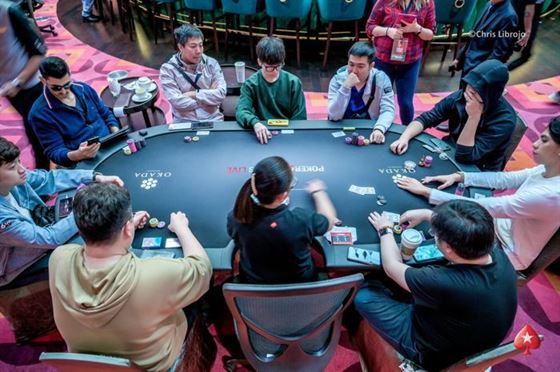Crushing Sit & Go Tournaments: Proven Strategies for Quick Wins is a comprehensive guide that provides players with effective strategies to succeed in Sit & Go poker tournaments. This guide offers valuable insights and techniques to help players navigate through the unique dynamics of these fast-paced tournaments and increase their chances of achieving quick wins. Whether you are a beginner or an experienced player, this guide equips you with the necessary tools to crush Sit & Go tournaments and improve your overall poker skills.
Mastering the Basics: Essential Strategies for Winning Sit & Go Tournaments
The first and most important strategy for winning Sit & Go tournaments is to master the basics of poker. This means understanding the rules of the game, knowing the value of different hands, and being able to calculate odds and probabilities. Without a solid foundation in the basics, it will be difficult to make informed decisions and outplay your opponents.
Once you have a good grasp of the basics, the next step is to develop a tight and aggressive playing style. In Sit & Go tournaments, the blinds increase quickly, which means you need to accumulate chips early on to stay in the game. Playing tight means only playing strong hands and folding weaker ones. This will help you avoid unnecessary losses and conserve your chips for when you have a strong hand.
Being aggressive, on the other hand, means betting and raising when you have a strong hand. This puts pressure on your opponents and can force them to make mistakes. By playing tight and aggressive, you can build a chip stack early on and put yourself in a strong position to win the tournament.
Another important strategy for Sit & Go tournaments is to pay attention to your opponents’ playing styles. Every player has their own unique style, and by observing how they play, you can gain valuable information about their hand strength and tendencies. For example, if a player is consistently raising pre-flop, they likely have a strong hand. By adjusting your own strategy based on your opponents’ playing styles, you can exploit their weaknesses and increase your chances of winning.
In addition to observing your opponents, it is also crucial to manage your bankroll effectively. Sit & Go tournaments have a fixed buy-in, and it is important to only play at stakes that you can afford. Going on a losing streak can be frustrating, but it is important to stay disciplined and not chase losses by playing at higher stakes. By managing your bankroll effectively, you can ensure that you can continue playing and have a better chance of making a profit in the long run.
Lastly, it is important to stay focused and avoid distractions while playing Sit & Go tournaments. Online poker can be a fast-paced and intense game, and it is easy to get caught up in the excitement. However, making rash decisions or playing on tilt can lead to costly mistakes. By staying focused and making rational decisions, you can maintain a clear head and increase your chances of success.
Analyzing Player Patterns: How to Exploit Weaknesses and Dominate Sit & Go Tournaments
One of the first steps in analyzing player patterns is to pay close attention to their betting tendencies. Some players may be overly aggressive, constantly raising and re-raising, while others may be more passive, only betting when they have a strong hand. By observing these patterns, you can adjust your own strategy accordingly. For example, if you notice that a player is consistently raising pre-flop, you can choose to re-raise with a wider range of hands to put pressure on them.
Another important aspect to consider is the position of the players at the table. The player who acts last has a significant advantage, as they have more information about the actions of the other players. By observing how players in late position play their hands, you can gain valuable insights into their strategies. For instance, if a player in late position frequently raises when everyone else has folded, it may indicate that they are trying to steal the blinds. In this case, you can choose to defend your blinds more aggressively or even re-raise them with a wider range of hands.
Furthermore, it is crucial to pay attention to the stack sizes of your opponents. Players with larger stacks tend to be more aggressive, as they have more chips to play with. On the other hand, players with smaller stacks may be more desperate and willing to take risks. By understanding these dynamics, you can exploit the weaknesses of both types of players. For example, if you have a large stack, you can put pressure on smaller stacks by frequently raising their bets. Conversely, if you have a smaller stack, you can look for opportunities to go all-in and potentially double up.
In addition to betting tendencies, position, and stack sizes, it is also important to analyze the playing style of your opponents. Some players may be tight and conservative, only playing premium hands. Others may be loose and aggressive, playing a wide range of hands. By identifying these playing styles, you can adjust your own strategy accordingly. For instance, if you are up against a tight player, you can choose to bluff more often, as they are more likely to fold. Conversely, if you are up against a loose player, you can tighten up your range and only play strong hands.
Lastly, it is crucial to remain adaptable and constantly reassess your strategy as the tournament progresses. Player patterns can change as the blinds increase and the tournament reaches its later stages. By staying observant and adjusting your strategy accordingly, you can maintain an edge over your opponents and increase your chances of success.
Advanced Techniques: Unleashing Aggression and Building Chip Stacks in Sit & Go Tournaments
One of the key elements of a successful Sit & Go strategy is understanding the importance of aggression. Unlike cash games or multi-table tournaments, Sit & Go tournaments have a fixed structure and limited time frame. This means that players need to accumulate chips quickly in order to stay ahead of the increasing blinds and antes.
To unleash aggression effectively, it is crucial to identify the right moments to make aggressive moves. This can be achieved by paying close attention to the table dynamics and the playing styles of your opponents. Look for opportunities to exploit weak players or those who are playing too tight. By applying pressure in these situations, you can force your opponents to make mistakes and give up their chips.
Another effective strategy for building chip stacks in Sit & Go tournaments is to take advantage of the bubble phase. The bubble phase occurs when there are only a few players left before the money positions. During this phase, many players become overly cautious, fearing elimination and missing out on a cash prize. This presents a perfect opportunity for aggressive players to accumulate chips by stealing blinds and antes.
When employing an aggressive strategy, it is important to be mindful of your chip stack size. While aggression can be a powerful tool, it should be used selectively and with caution. If your chip stack becomes too short, you may need to adjust your strategy and focus on survival rather than accumulating chips. However, if you have a healthy chip stack, you can afford to take calculated risks and put pressure on your opponents.
In addition to aggression, another key aspect of building chip stacks in Sit & Go tournaments is understanding the importance of position. Position refers to your seating arrangement in relation to the dealer button. Being in late position provides a significant advantage, as you have more information about your opponents’ actions before making your own decisions.
In late position, you can take advantage of the blinds and antes by stealing them with a wider range of hands. This allows you to accumulate chips without having to show down your cards. Conversely, when in early position, it is important to be more cautious and only play premium hands. By playing tight in early position and aggressive in late position, you can maximize your chances of building a substantial chip stack.
Mental Game Mastery: Developing the Right Mindset for Consistent Success in Sit & Go Tournaments
One of the most important aspects of the mental game in Sit & Go tournaments is maintaining focus and concentration. With the fast pace of these tournaments, it is easy to get distracted or lose focus. However, staying focused is essential for making optimal decisions and capitalizing on opportunities. To enhance focus, it is helpful to eliminate distractions and create a conducive playing environment. This can include finding a quiet space, turning off notifications, and avoiding multitasking.
Another crucial element of the mental game in Sit & Go tournaments is managing emotions. Poker is a game of highs and lows, and it is easy to get emotionally invested in the outcome of each hand. However, allowing emotions to dictate decisions can lead to costly mistakes. It is important to stay calm and composed, regardless of the outcome of a hand. Developing emotional resilience and maintaining a positive mindset can help in navigating the inevitable swings of Sit & Go tournaments.
In addition to focus and emotional management, having a solid game plan is essential for success in Sit & Go tournaments. A well-thought-out strategy can provide a framework for decision-making and guide players through different stages of the tournament. It is crucial to understand the dynamics of Sit & Go tournaments, including the importance of chip stack management, adjusting to different stack sizes, and exploiting opponents’ tendencies. Adapting to changing circumstances and making informed decisions based on the available information is key to long-term success.
Furthermore, bankroll management is a critical aspect of the mental game in Sit & Go tournaments. Properly managing one’s bankroll ensures longevity in the game and minimizes the risk of ruin. It is important to set aside a dedicated bankroll for Sit & Go tournaments and adhere to strict bankroll management principles. This includes playing within one’s limits, avoiding unnecessary risks, and being disciplined in bankroll allocation.
Lastly, developing a growth mindset is crucial for continuous improvement in Sit & Go tournaments. Recognizing that poker is a skill-based game and that success is a result of hard work and dedication can help players stay motivated and focused on their long-term goals. Embracing challenges, seeking feedback, and constantly learning from both wins and losses are essential for growth as a player.
Adapting to Different Stages: Strategies for Early, Middle, and Late Game Sit & Go Tournaments
In the early stages of a Sit & Go tournament, the blinds are low, and the stacks are deep. This is the time to play a tight and aggressive game. By playing only premium hands and raising aggressively, you can build a solid chip stack and put pressure on your opponents. It is important to be selective with your starting hands, focusing on those that have the potential to make strong post-flop hands. Additionally, it is crucial to pay attention to your opponents’ playing styles and adjust your strategy accordingly. If you notice that a player is playing too loose or too tight, you can exploit their weaknesses and increase your chances of winning big pots.
As the tournament progresses into the middle stages, the blinds start to increase, and the stacks become shallower. This is the time to loosen up your starting hand requirements and play more aggressively. With the blinds eating away at your stack, it is important to accumulate chips and stay ahead of the rising blinds. Look for opportunities to steal the blinds and antes, especially from tight players who are likely to fold to aggression. However, be cautious when facing resistance, as players are more likely to have strong hands at this stage. It is crucial to be aware of your table image and adjust your strategy accordingly. If you have been playing tight, you can use this to your advantage by bluffing more often. On the other hand, if you have been playing loose, you can tighten up and wait for premium hands to make big bets.
In the late stages of a Sit & Go tournament, the blinds are high, and the stacks are shallow. This is the time to be aggressive and take calculated risks. With the increasing blinds, the cost of playing hands becomes higher, and the need to accumulate chips becomes more urgent. Look for opportunities to go all-in and put pressure on your opponents. However, be mindful of your opponents’ stack sizes and adjust your strategy accordingly. If you have a big stack, you can use it to bully smaller stacks and force them to fold. If you have a short stack, you may need to take more risks and go all-in with marginal hands to stay in the game. It is important to be aware of the payout structure and adjust your strategy accordingly. If the tournament is top-heavy, meaning that the majority of the prize pool goes to the top finishers, you should be more aggressive in your pursuit of first place. However, if the payout structure is more evenly distributed, you can adopt a more conservative approach and aim for a cash finish.
In conclusion, Sit & Go tournaments require players to adapt their strategies to the different stages of the game. By playing tight and aggressive in the early stages, loosening up and stealing blinds in the middle stages, and being aggressive and taking calculated risks in the late stages, players can increase their chances of crushing Sit & Go tournaments and achieving quick wins. It is important to be aware of your opponents’ playing styles, adjust your strategy accordingly, and always be mindful of the changing dynamics of the game. With practice and experience, you can become a formidable Sit & Go player and enjoy the thrill of quick wins in these exciting tournaments.




